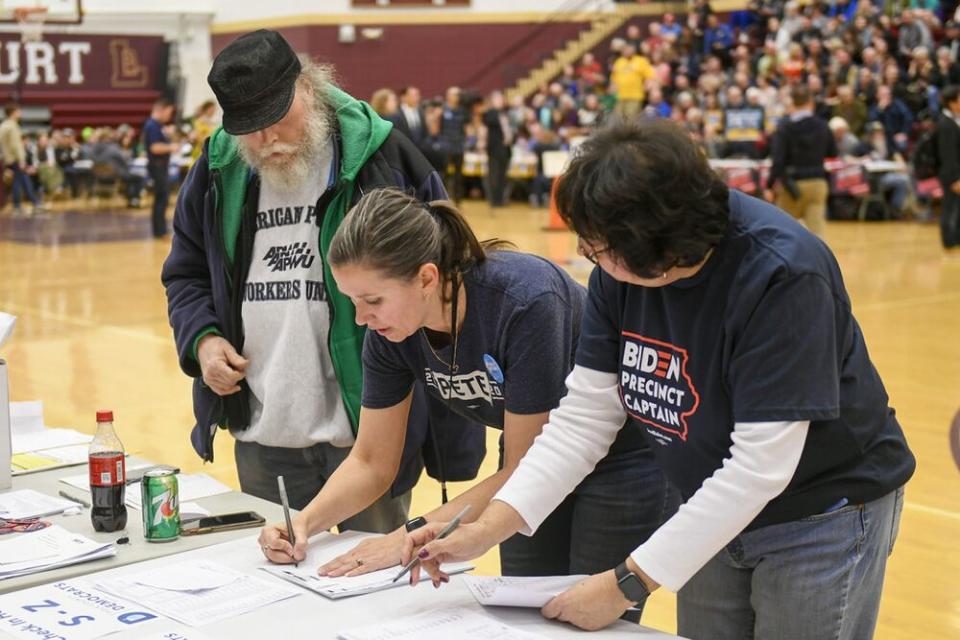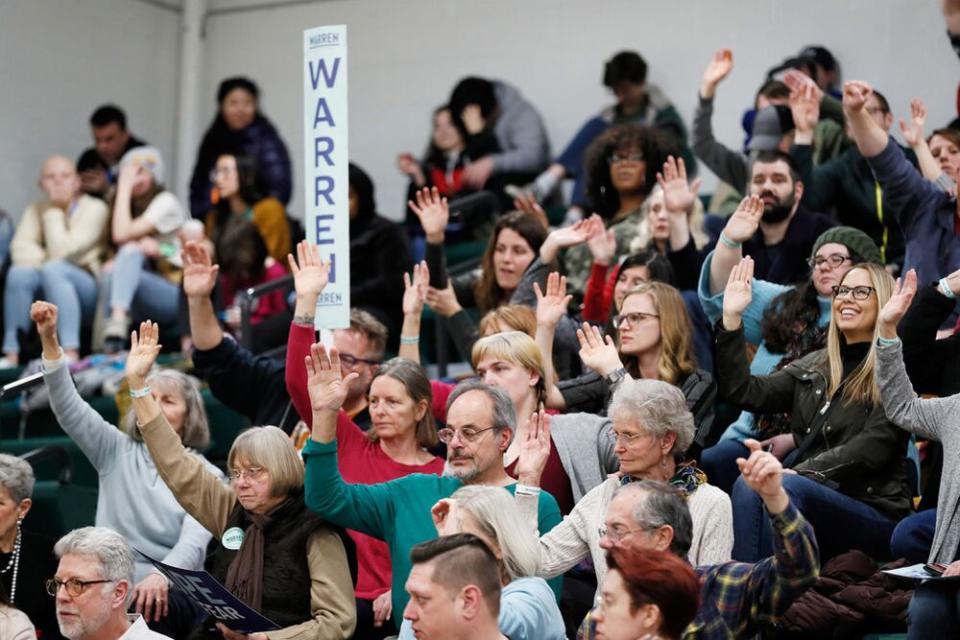What Went Wrong During the Iowa Democratic Caucus and Why Some People Are Freaking Out About the Delay
This is how Monday night’s Democratic caucus in Iowa was expected to go:
Tens of thousands of voters would gather at some 1,700 voting locations across the state in a caucus meeting lasting about an hour or so where they would publicly vote for their preferred Democratic candidate: former Vice President Joe Biden or Sen. Bernie Sanders, maybe, or former Indiana mayor Pete Buttigieg or Sen. Elizabeth Warren.
Through the somewhat complicated rules of Iowa caucusing, in which some voters’ first choice would be eliminated and they would have to switch their public vote to their second choice, one of the Democrats would emerge the winner.
And the Iowa caucus, which for decades has been the start of the Democratic primary process, would continue its outsized role of spotlighting a winning candidate whom voters seem to really, truly prefer after all the campaign speeches and events are over and done.
Instead, here is what happened on Monday night:
The voters did, indeed, gather and they did really caucus. At the 1,678 precincts across the state, with an additional 99 satellite precincts, Iowans went through the various steps of caucusing: physically sorting themselves in a room by their voter preference — Biden voters in one corner, say, with Sanders voters in another — and then re-sorting as necessary if their first choice didn’t get enough votes to make the cutoff.
From there, the so-called “viable” groups of votes that met the minimum cutoff of support (usually 15 percent of the total) were counted as the final results for a given precinct and then those votes were converted, by a mathematical formula, into a state delegate equivalent that would be used to determine who the state’s caucus winner was.
All of that appears to have been done correctly.
The problem was in reporting these results to the public.
RELATED: Who Is Still Running for President in 2020


As of Tuesday afternoon, nearly 24 hours later, the Iowa Democratic Party had not yet released official results from its caucus.
The candidates were frustrated and confused, party officials were doing damage control and the media — which had swarmed Iowa for months given that it was to be the first chance to see actual voters actually vote on candidates — was more or less really, really upset to not have any numbers to inform their coverage.
On social media, especially after early reports that party officials said the delay was because of “quality control” being done on the results, some conspiracy theories spread about what was taking so long.
“The delay and surrounding issues really *are* a huge story right now, it’s not just that people are too impatient these days and should just sit back, grab a drink, and wait for results to come when they come,” NBC News editor Benjy Sarlin tweeted in a larger thread about the controversy. “It dramatically impacts how those results are framed.”
In a statement on Tuesday, the state party blamed a “coding issue” with a smartphone app that it had planned to use to gather voting information from each precinct.
RELATED: Every 2020 Presidential Candidate Celebrities Have Supported So Far
According to various media reports, some caucus workers also reported being unable to submit their voting results by phone.
In a surreal, only-on-live-TV moment Monday night, CNN’s Wolf Blitzer was on the phone with a caucus worker who was on hold on the other line while trying to report voting numbers from their precinct. The worker then got someone on the phone to report their results but the person hung up on them while Blitzer was trying to get CNN access to listen in.
“As precinct caucus results started coming in, the IDP [Iowa Democratic Party] ran them through an accuracy and quality check. It became clear that there were inconsistencies with the reports. The underlying cause of these inconsistencies was not immediately clear, and required investigation, which took time,” the Iowa party chair, Troy Price, said in a statement on Tuesday.
“As this investigation unfolded, IDP staff activated pre-planned backup measures and entered data manually. This took longer than expected,” he continued.
RELATED VIDEO: Iowa Caucus 2020 — What’s a Caucus? Who Are The Ones to Watch? Everything You Need to Know
“As part of our investigation, we determined with certainty that the underlying data collected via the app was sound. While the app was recording data accurately, it was reporting out only partial data,” Price said. “We have determined that this was due to a coding issue in the reporting system. This issue was identified and fixed. The application’s reporting issue did not impact the ability of precinct chairs to report data accurately.”
“More than 50 percent” of the caucus results were set to be released starting at 4 p.m. local time on Tuesday (or 5 p.m. on the East Coast), Price told the campaigns on Tuesday morning, according to reports.
A party spokeswoman told The Des Moines Register that half or so of the results would be released.
But the key question remained: When would all of the results be made public?
“While our plan is to release results as soon as possible today, our ultimate goal is to ensure that the integrity and accuracy of the process continues to be upheld,” Price said in his statement Tuesday.
The confusion also fueled ongoing criticism about Iowa’s first-in-the-nation status, given that it is older and whiter and more rural than many places where American voters live and because its caucus rules are more complicated (and more exclusionary) than the conventional voting with which most Americans are familiar.
Voters in the Republican Iowa caucus, which is held on the same night though with different rules, overwhelmingly chose President Donald Trump as their winner, in what amounted to little more than a formality.

